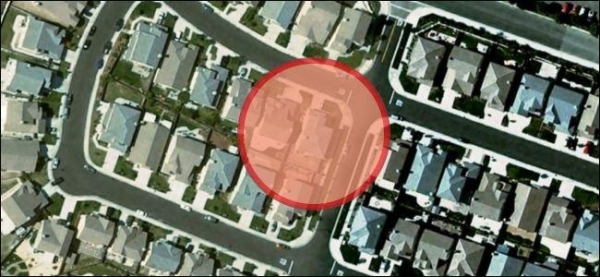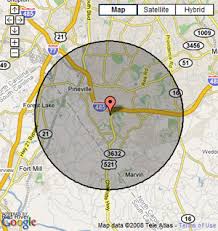Global Positioning System
The Global Positioning System (GPS) is a space-based satellite navigation system that provides location and time information in all weather, anywhere on or near the Earth. Global Positioning Systems usually refer to the GPS receiver. It was developed by the U.S. military and after a while, the U.S. government opened it up for the public.
The GPS receiver receives signals coming from 27 satellites orbiting the Earth and from those signals the GPS receiver can calculate its absolute position of Earth. These satellites circle the Earth, making two complete rotations every day. Their orbits are planned in such a way that at any time and anywhere on Earth, there are at least four satellites visible in the sky.
Working:
The GPS satellites rotate twice a day around the earth in a specific orbit. These satellites transmit signal information to earth. This signal information is received by the GPS receiver in order to measure the user’s correct position. The GPS receiver compares the time a satellite transmits the signal with the time the signal is received. The time difference calculated enables us to know the distance of the satellite. By measuring the distance of a few more satellites, the user’s position can be verified and displayed on the unit’s electronic map. To measure 2D position and track movement, the GPS receiver must lock the signal of three satellites. The receiver can measure the 3D position (latitude, longitude, and altitude) if the GPS receiver locks the signal of four or more satellites. On determining the position of the user, the unit of GPS can measure speed, trip distance, bearing, distance to destination, tack, time of sunrise and sunset, etc.

Benefits of GPS
- Travel directions: Utilizing a GPS system will give you accurate directions for travel. Whether you are traveling locally, across the country, or globally, you will get accurate going camping in the middle of the woods and not being able to find your way out. You often hear stories about people that go out camping or hiking and don’t find their way back home. A GPS unit is the answer for these people.
- Maritime GPS: GPS systems on a ship or a boat help greatly, not only because they tell you where you are located in the middle of the sea, but also because they give you warnings about weather changes; as well as any dangers there might be at sea, like an iceberg, for instance. Another great function of the GPS device used by fishermen is the hotspot finder. A fisherman can relocate a certain spot out at sea by saving his current location, which he may think is ideal for fishing.

- Fuel economy: If you want to maximize your fuel economy you’ll need a good GPS system. Saving money at the pump as well as wear and tear on your vehicle should be one of the main reasons why you should want a good GPS system in your vehicle. Accurate driving directions not only save time but also helps save a substantial amount of gas money while traveling from place to place.
- GPS Tracking: If you run a courier business, rental business, or just plain delivery service, and need to keep track of several vehicles, then GPS is what you need. Keeping track of your vehicles will keep your overheads down. The other end of tracking is keeping track of a family member or child, a GPS tracking system will aid in your efforts.
Introduction to Geofence:
Geofencing is the use of the Global Positioning System (GPS) satellite network and/or local radio-frequency identifiers (such as Wi-Fi nodes or Bluetooth beacons) to create virtual boundaries around a location. Geofencing is a location-based service in which an app or other software uses GPS, RFID, Wi-Fi or cellular data to trigger a pre-programmed action when a mobile device or RFID tag enters or exits a virtual boundary set up around a geographical location, known as a geofence. Depending on how a geofence is configured it can prompt mobile push notifications, trigger text messages or alerts, send targeted advertisements on social media, allow tracking on vehicle fleets, disable certain technology or deliver location-based marketing data. Some geofences are set up to monitor activity in secure areas, allowing management to see alerts when anyone enters or leaves a specific area. Businesses can also use geofencing to monitor employees in the field, automate time cards and keep track of company property.
How geofencing works:
To make use of geofencing, an administrator or developer must first establish a virtual boundary around a specified location in GPS- or RFID-enabled software. This can be as simple as a circle drawn 100 feet around a location on Google Maps, as specified using APIs when developing a mobile app. This virtual geofence will then trigger a response when an authorized device enters or exits that area, as specified by the administrator or developer. A geofence is most commonly defined within the code of a mobile application, especially since users need to opt-in to location services for the geofence to work. If you go to a concert venue, they might have an app you can download that will deliver information about the event.

A retailer might draw a geofence around its outlets to trigger mobile alerts for customers who have downloaded the retailer’s mobile app. In these cases, a geofence that is managed by the retailer is programmed into the app, and users can opt to decline location access for the app. A geofence can also be set up by end-users using geofencing capabilities in their mobile apps. These apps, such as iOS Reminders, allow you to choose an address or location where you want to trigger a specific alert or push notification. This is called an “if this, then that” command, where an app is programmed to trigger an action based on another action. For example, “If I’m five feet from my front door, turn on my lights.” Or you might ask a reminder app to send you an alert once you reach a specific location.
Geofencing applications:
With the rising popularity of mobile devices, geofencing has become a standard practice for plenty of businesses. Once a geographic area has been defined, the opportunities are seemingly endless for what companies can do, and it has become especially popular in marketing and social media.
Here are other common geofencing applications:

- Social networking: One of the most recognizable uses for geofencing comes in the form of popular social networking apps — most notably, Snapchat. Location-based filters, stickers and other shareable content are all made possible with geofencing. Whether you’re using a promoted filter at a concert, using a custom-made filter for a friend’s birthday or uploading to public, location-based stories, it’s all thanks to these virtual perimeters.
- Marketing: Besides social networking, geofencing is also a popular way for businesses to deliver in-store promotions, alerting you right as you step in range of the store. Geofencing also helps businesses target ads to a specific audience to figure out what strategies work best based off user’s location-data.
- Audience engagement: Geofencing is used to engage crowds of people at organized events, like concerts, festivals, fairs and more. For example, a concert venue might use a geofence to crowdsource social media posts or deliver information about the venue or event.
- Smart appliances: As more of our appliances get “smart,” with Bluetooth capabilities, it’s easier than ever to program your fridge to remind you that you’re out of milk the next time you pass by the grocery store. Or you can make sure the thermostat is set to the perfect temperature when you get home from work by using a geofence.
- Human resources: Some companies rely on geofencing for monitoring employees, especially workers who spend time off-site doing fieldwork. It’s also an easy way to automate time cards, clocking employees in and out as they come and go.
- Telematics: Geofencing can also be helpful with telematics, allowing companies to draw virtual zones around sites, work areas, and secure areas. They can be triggered by a vehicle or a person and send alerts or warnings to the operator.
- Security: Geofencing might seem invasive — and it certainly has the potential to sometimes feel like an overreach depending on how it’s used. However, geofencing can also be used to bring more security to your mobile device. For example, you can set your phone to unlock when you’re home using a geofence or to get alerts when someone enters the house or leaves.
The Future of Geofencing
Although still unfamiliar to many people geofencing is a natural extension of our desire for our devices to do more (and to do more automatically) and to decrease the friction with which interact with our environment. As devices become increasingly sophisticated and more elements of our home, vehicles, and workplace enters the ever-growing stable of “Internet of things” objects expect to see geofencing applied to more and more devices and environments.

This increased integration could yield all sorts of novelties like workstations that power down when their owners leave for the building, coffee pots that turn on in the morning when the first coffee drinkers arrive, attic fans that whirl to life to suck in cool evening air as you drive home, garage doors that open automatically as you round the bend, and all manner of little changes that leave the computers to worry about the trivial bits while we get to focus on things more interesting than wondering if we locked the back door properly.